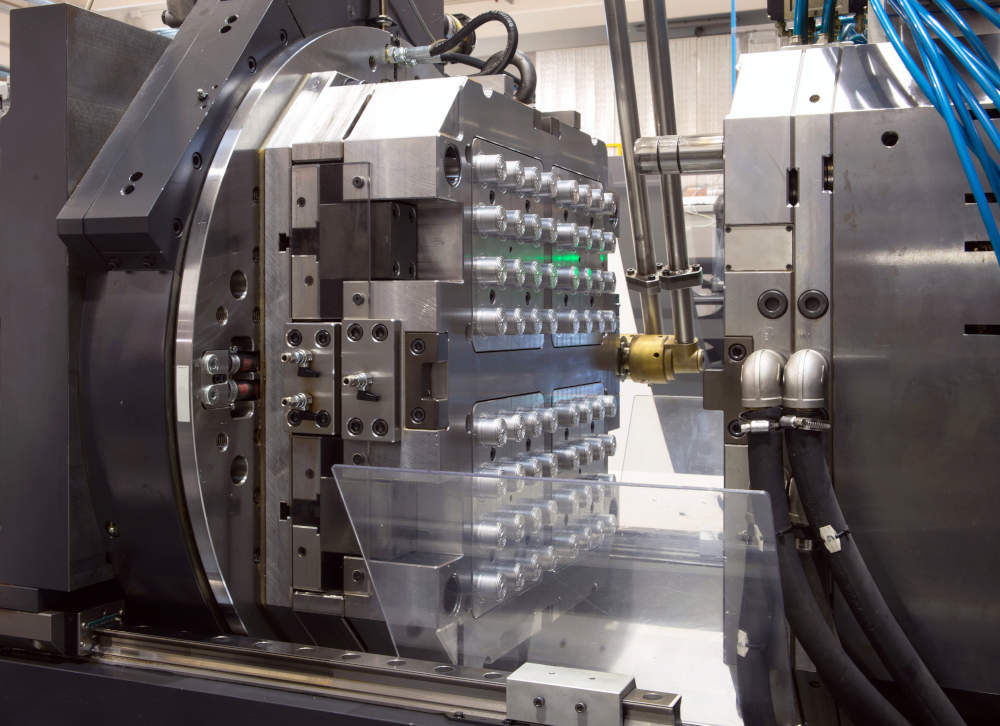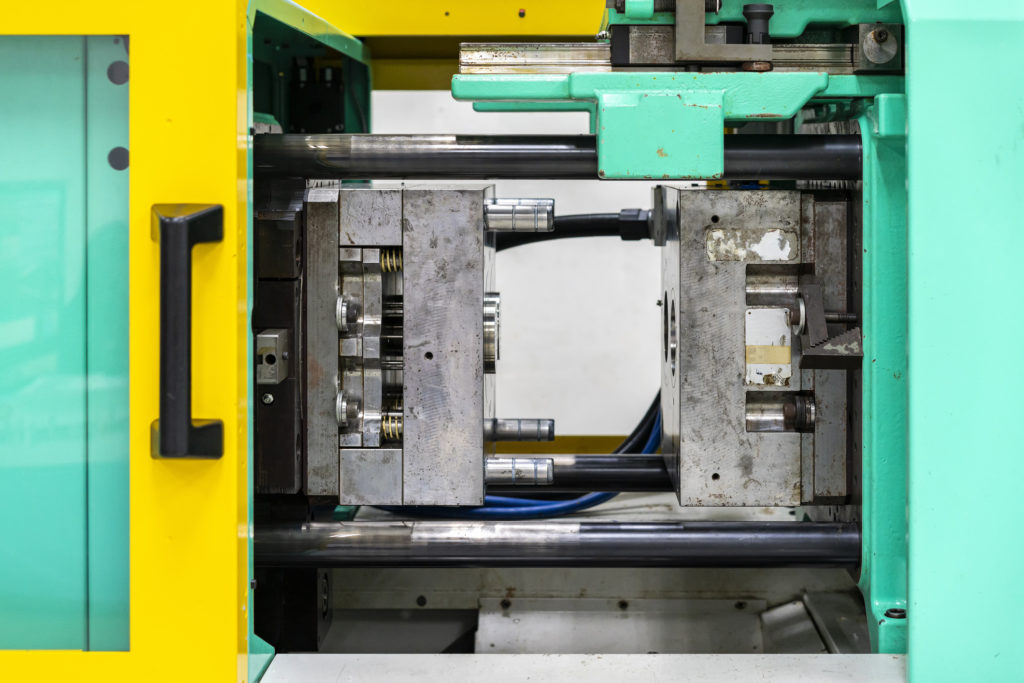The Function of Plastic Injection Molding in Producing Affordable Industrial Parts
The Function of Plastic Injection Molding in Producing Affordable Industrial Parts
Blog Article
Understanding the Fundamentals of Plastic Shot Molding Processes
Plastic injection molding serves as a keystone of modern manufacturing, offering a methodical technique to generating complex components with precision. This process not just encompasses the essential actions of melting and infusing products right into mold and mildews yet additionally involves a nuanced understanding of various influencing factors, such as temperature level and stress. As markets increasingly demand effectiveness and quality, the ins and outs of this technique become more crucial. Checking out these vital aspects might expose exactly how even minor adjustments can result in significant improvements in manufacturing results, raising questions about the potential for technology in this established process.
What Is Plastic Injection Molding?
Plastic injection molding is a commonly utilized manufacturing process that transforms polycarbonate and thermosetting materials right into accurate and intricate forms. This technique is preferred for its capacity to produce high quantities of the same get rid of exceptional accuracy, making it an indispensable technique in numerous sectors, including vehicle, customer goods, and medical gadgets.
The procedure entails thawing the chosen plastic material and injecting it right into a mold and mildew under high pressure. The mold, developed to the requirements of the desired part, enables the molten plastic to take form as it solidifies and cools. When the product has actually set, the mold and mildew is opened, and the finished element is expelled.
Plastic shot molding supplies several advantages, including decreased waste, consistency in production, and the ability to integrate detailed layouts that might be testing with various other making approaches. Additionally, it supports a wide variety of products, each providing distinct buildings that can be customized for details applications. As sectors remain to introduce, plastic shot molding stays at the leading edge, allowing the development of advanced items that fulfill advancing customer demands.
The Injection Molding Refine
The shot molding process is an advanced method that involves a number of crucial stages to produce top quality plastic components. Plastic pellets are fed into a heated barrel where they are thawed into a viscous fluid. This molten plastic is after that injected under high stress right into a precision-engineered mold, which forms the product into the wanted type.
Once the mold and mildew is filled up, the plastic is enabled to cool down and strengthen, taking the shape of the mold and mildew tooth cavity. Cooling time is critical, as it impacts the cycle time and the final properties of the molded part. After adequate cooling, the mold opens up, and the finished part is ejected making use of ejector pins.

Products Utilized in Shot Molding
Different materials can be used in the injection molding process, each offering unique homes that satisfy particular applications. The most commonly used products consist of thermoplastics, thermosetting plastics, and elastomers.

Thermosetting plastics, like epoxy and phenolic resins, undertake a chemical change during the treating process, resulting in a stiff, stringent framework. These materials are optimal for applications needing high warm resistance and architectural integrity, commonly made use of in electrical insulators and vehicle components.
Elastomers, consisting of silicone and rubber-based products, give flexibility and resilience. Their distinct buildings make them suitable for applications that demand elasticity, such as seals and gaskets.
Additionally, specialized products like bio-based plastics and compounds are obtaining grip for their environmental benefits and enhanced performance characteristics, broadening the scope of injection molding applications in various industries. Comprehending the residential properties of these products is critical for picking the proper kind for details tasks.
Benefits of Injection Molding
Injection molding stands out as a highly efficient production procedure that uses countless benefits for creating complex get rid of accuracy. Among one of the most considerable benefits is the ability to develop complex styles that would be difficult or difficult to achieve with various other techniques (Plastic Injection Molding). The procedure permits for limited tolerances and detailed attributes, ensuring high-quality parts
Furthermore, injection molding is recognized for its fast production capacities, making it a suitable option for high-volume production. When the mold is produced, parts can be generated rapidly, reducing preparations and increasing general productivity. This performance not only decreases production expenses but likewise provides an one-upmanship on the market.
The versatility of products made use of in injection molding additionally enhances its charm. More about the author A variety of thermoplastics and thermosetting polymers can be employed, enabling manufacturers to choose products that best satisfy their specific demands, consisting of warm, toughness, and flexibility resistance.
In addition, the process lessens waste, as excess product can often be recycled and reused. This sustainability element adds to a reduced environmental effect, making shot molding a liable production selection. Overall, the advantages of injection molding make it a favored technique for lots of sectors.
Variables Affecting Product Quality
While various elements can influence product quality in injection molding, understanding these elements is important for accomplishing ideal outcomes. Secret elements include material selection, processing parameters, and mold layout.
Product option plays a vital role, as various polymers display special buildings that influence flowability, toughness, and thermal security. Insufficient material choice can lead to defects such as bending or insufficient filling.
Processing parameters, consisting of stress, temperature, and cycle time, need to be meticulously controlled. Variants in these settings can result in incongruities partially dimensions and surface coating. Exceedingly high temperatures might trigger degradation of the polymer, while poor pressure can result in brief shots.
Mold layout is similarly important, as it establishes the flow of the molten plastic and the cooling procedure. Improperly designed mold and mildews may cause uneven air conditioning rates, leading to residual anxieties and dimensional inaccuracies.

Verdict
To conclude, plastic injection molding functions as a crucial manufacturing process that enables the efficient manufacturing of high-grade parts. Proficiency of the injection molding process, including the understanding of products and the impact of different elements on product top quality, is crucial for attaining optimum results. The advantages of this approach, such as cost-effectiveness and layout versatility, further underscore its value throughout several industries, strengthening its condition find out this here as a favored choice for high-volume manufacturing.
Plastic injection molding serves as a keystone of contemporary manufacturing, giving a methodical approach to generating complicated components with accuracy.Plastic shot molding offers several benefits, including reduced waste, uniformity in production, and the capacity to integrate intricate styles that may be testing with other producing methods (Plastic Injection Molding). As sectors continue to introduce, plastic injection molding stays at the forefront, allowing the development of sophisticated items that meet advancing consumer needs
The injection molding process is an advanced strategy that involves numerous key stages to generate premium plastic parts.In final thought, plastic shot molding offers as a vital production process that allows the reliable production of top notch components.
Report this page